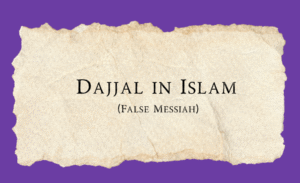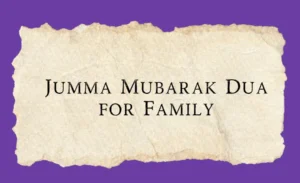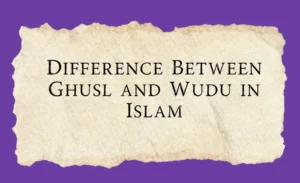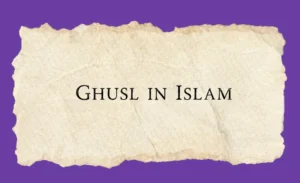Eid al-Adha, or the “Festival of Sacrifice,” is one of the two major Islamic holidays celebrated by Muslims worldwide. It holds deep spiritual and religious significance, symbolizing sacrifice, obedience, and gratitude to Allah. But why is this important festival celebrated right after the completion of Hajj, the annual pilgrimage to Mecca?
The timing of Eid al-Adha and its close association with the Hajj pilgrimage are not coincidental. The two events are intimately linked in both historical and spiritual terms. In this blog, we will explore the reasons behind this connection, the rituals of Eid al-Adha, and how Hajj influences the celebration of Eid.
The Historical and Spiritual Link Between Eid al-Adha and Hajj
Eid al-Adha takes place on the 10th of Dhu al-Hijjah, immediately following the culmination of the Hajj pilgrimage. This connection between the two events is rooted in Islamic history, particularly the story of Prophet Ibrahim (Abraham), his son Isma’il (Ishmael), and their profound acts of obedience to Allah.
1. Commemoration of Prophet Ibrahim’s Sacrifice
The central theme of Eid al-Adha revolves around the sacrifice that Prophet Ibrahim was willing to make in obedience to God’s command. The Qur’an narrates the story of how Ibrahim was instructed by Allah in a dream to sacrifice his beloved son Isma’il. In an extraordinary act of devotion, Ibrahim prepared to carry out the command, showing his complete submission to the will of God. However, Allah, in His mercy, provided a ram as a substitute, sparing Isma’il’s life.
Qur’anic Reference: The story is detailed in Surah As-Saffat (37:102-107), where Allah commands Ibrahim to sacrifice his son, and in the end, a ram is sent as a substitute. This act of obedience is the foundation of Eid al-Adha and serves as a powerful reminder of the importance of submitting to Allah’s will, even in the face of personal sacrifice.
This event is commemorated through the ritual sacrifice of animals during Eid al-Adha. By performing the Qurbani (sacrifice), Muslims worldwide recall Ibrahim’s devotion and demonstrate their own willingness to give up what is dear to them in service of Allah.
2. Eid al-Adha and the Completion of Hajj
The timing of Eid al-Adha is closely linked to the rites of Hajj, which take place during the first 10 days of Dhu al-Hijjah. These 10 days are considered the holiest days in the Islamic calendar. The final days of Hajj, especially the 9th of Dhu al-Hijjah, are crucial because they mark the Day of Arafat, when pilgrims gather at the plain of Arafat to make supplications and seek forgiveness from Allah.
On the 10th of Dhu al-Hijjah, which is Eid al-Adha, the act of sacrifice symbolizes the culmination of the Hajj pilgrimage and marks the successful completion of the Hajj rituals.
Symbolism of Eid Following Hajj: Since the Hajj pilgrimage is the fifth pillar of Islam, and the Qurbani (sacrifice) is a key ritual of Eid al-Adha, the celebration of Eid directly after the conclusion of Hajj emphasizes the completion of a major act of worship. For Muslims who have performed Hajj, Eid al-Adha represents both the personal fulfillment of an essential religious duty and a collective expression of gratitude and unity within the global Muslim community.
The Role of Sacrifice in Eid al-Adha
The Qurbani (sacrifice) performed during Eid al-Adha has a deep theological and social significance. It is not simply about the act of slaughtering an animal, but a symbolic gesture of selflessness, obedience, and sharing.
1. A Reminder of Sacrifice for Allah
Through the act of sacrifice, Muslims reflect on the sacrifice of Ibrahim and reaffirm their commitment to submit to the will of Allah. The Qurbani is an opportunity for Muslims to demonstrate their willingness to part with their wealth and possessions, acknowledging that everything belongs to Allah.
The Significance of the Animal Sacrifice: Animals such as sheep, goats, cows, and camels are typically sacrificed during Eid al-Adha. The meat is then distributed among family, friends, and the poor, ensuring that even the less fortunate can partake in the joy of the occasion. The sacrifice is a tangible way of sharing blessings and reinforcing the communal nature of Islam.
Qurbani as an Act of Charity: In line with the values of generosity and selflessness, a significant portion of the meat from the sacrifice is given to those in need. This charitable aspect ensures that Eid al-Adha is a time of unity, solidarity, and care for the less privileged.
2. Hajj as the Ultimate Expression of Submission
For those who perform Hajj, the connection between the sacrifice and the pilgrimage is deeply personal. Hajj is the ultimate act of submission to Allah, where millions of Muslims from around the world gather to demonstrate their devotion. The sacrifice that takes place during Eid al-Adha represents the physical manifestation of this submission. It is an expression of faith, reverence, and a way of spiritually connecting with the rituals of Ibrahim and his family.
A Global Pilgrimage: Every year, millions of Muslims travel to Mecca to perform Hajj, which is a deeply transformative experience. In 2023, approximately 2.6 million people performed Hajj, with numbers expected to exceed 3 million in 2025. For these pilgrims, Eid al-Adha becomes the culmination of their Hajj experience, marking both the end of the pilgrimage and the beginning of a renewed spiritual journey.
A Celebration of Unity: Hajj brings together Muslims from all over the world, transcending national, ethnic, and linguistic differences. The act of sacrifice on Eid al-Adha similarly reinforces the message of unity and collective worship, as Muslims come together to celebrate their shared faith and devotion.
The Global Observance of Eid al-Adha
Although Eid al-Adha is deeply tied to Hajj, the festival is observed globally, even by those who are not able to perform the pilgrimage. The rituals and significance of Eid al-Adha resonate with Muslims everywhere, whether in Mecca or in communities thousands of miles away.
1. The Scale of Eid al-Adha Celebrations
Eid al-Adha is celebrated by millions of Muslims in over 180 countries, making it one of the largest religious celebrations in the world. From the bustling streets of Cairo to the quiet towns of Indonesia, Muslims celebrate Eid al-Adha with prayers, sacrifices, and acts of charity.
Global Statistics on Sacrifice: In 2022, more than 10 million animals were sacrificed worldwide during Eid al-Adha, according to estimates. This number includes millions of sheep, goats, cows, and camels, demonstrating the global scale of the sacrifice. Countries like Saudi Arabia, Pakistan, India, Indonesia, and Bangladesh see the highest number of sacrifices, while Muslims in smaller communities and diaspora groups also partake in the ritual through organized charity programs.
2. Cultural Traditions Around the World
While the core rituals of Eid al-Adha remain the same—prayer, sacrifice, charity, and family gatherings—different regions have unique ways of observing the festival. In the Middle East, large communal meals and feasts are prepared, while in South Asia, dishes like biryani and sheer khurma (a sweet milk dessert) are popular. In Turkey, Eid is called Kurban Bayramı, and the entire country comes together to celebrate with street festivities and cultural performances.
Charity and Social Responsibility: Whether it’s organizing food drives in the West, distributing meat to the needy in South Asia, or holding community events in Africa, the charitable aspect of Eid al-Adha is universal. This is a time when Muslims are reminded of their responsibility to care for the poor, vulnerable, and marginalized.
The Timing of Eid al-Adha After Hajj: A Spiritual Milestone
Eid al-Adha’s position right after the completion of Hajj is symbolic of the spiritual milestones achieved during the pilgrimage. For those who perform Hajj, Eid al-Adha represents the fulfillment of one of the five pillars of Islam, a time for deep reflection, and an opportunity for renewal of faith. The sacrifice that follows is a way of demonstrating the lessons learned during Hajj: sacrifice, submission, and gratitude to Allah.
A Renewed Commitment to Faith: For those who have completed Hajj, Eid al-Adha is a reminder to carry forward the lessons of patience, humility, and devotion learned during the pilgrimage. It’s a spiritual reset, an opportunity to give thanks for the journey and the experience, and to reflect on how those lessons can be applied to daily life.
For Non-Pilgrims: For those unable to perform Hajj, Eid al-Adha is a time to celebrate the shared bonds of faith, reflect on the story of Ibrahim and Isma’il, and engage in acts of charity that bring communities closer together.
Eid al-Adha: A Global Celebration of Faith, Sacrifice, and Unity
Eid al-Adha’s timing right after Hajj is a powerful reminder of the deep spiritual connection between the pilgrimage and the act of sacrifice. As Muslims commemorate the submission of Ibrahim, they also celebrate the completion of one of the most significant acts of worship: the Hajj.
The sacrifices made during Eid al-Adha serve as an expression of faith, a symbol of selflessness, and a commitment to helping those in need. Whether a pilgrim in Mecca or a believer elsewhere in the world, Eid al-Adha unites Muslims globally in a shared sense of devotion, gratitude, and community.






